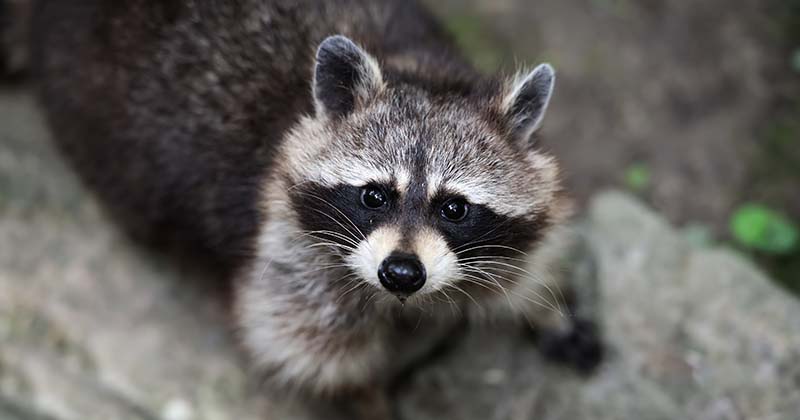Trash pandas in the Lone Star State
In 2014, an online commenter called raccoons trash pandas and the term stuck. With their black eye masks similar to panda bears, and ringed tails similar to red pandas, as well as their affinity for raiding garbage cans, the name made sense, at least to denizens of the internet and one Minor League Baseball team in Alabama (the Rocket City Trash Pandas). For the etymologists among you, Texas Parks and Wildlife Department (TPWD) offers this bit of trivia for the trash panda’s original moniker: “The name ‘raccoon’ came from an Algonquian Indian word arakun, which means ‘he scratches with his hands.’ During the 1700s, American colonists dropped the ‘a’ in arakun, and the name became raccoon.”
Texas raccoons
Native to Texas (and North America) the common raccoon (Procyon lotor) is found throughout the state (and probably in your backyard). Raccoons favor living near water sources and dwell in most areas of the United States except in desert areas of Nevada, Utah, Arizona, and parts of the Rocky Mountains. As described by TPWD, “their diet includes fruits and nuts, insects and aquatic invertebrates, fish, small rodents, frogs, bird eggs, carrion and human garbage.”
These nocturnal critters can weigh up to 20 lbs. and each hand has five nimble fingers (and each foot five toes) that can be used to climb trees and open containers (in case you’re wondering how they dismantle your bird feeder every night). Indeed, a raccoon’s front paws have remarkable powers. Compared with most mammals, raccoons have four to five times more sensory cells in their paws. Thanks to these sensory receptors, at night their paws are able to distinguish between objects without seeing them. In short, raccoons can “see” with their hands.
Around April or May, raccoons have litters of two to seven young. Baby raccoons are weaned by three months but remain with their mothers for another year. Lots of little hands around ready to make trouble.
For some people, even when raccoons are wreaking havoc, it’s hard to not be at least a little charmed by these clever and inquisitive furry bandits. For others, raccoons are unwelcome trouble. Texas A&M Agrilife Extension doesn’t mince words:
“Raccoons can cause considerable damage. In rural areas, they may raid poultry houses, feed on farm crops, and may kill young lambs and kid goats. In urban areas, damage occurs mainly to attics and roofs, but other damage may include ruining gardens, eating fruit on trees, digging up yards, or exposing people or pets to transmissible diseases. Several different types of parasites and diseases affect raccoons such as fleas, ticks, lice, roundworms, tapeworms, distemper, tuberculosis, mange and rabies.”
The biological reason for the raccoon mask
Football players and their fans are familiar with the use of black markings under eyes. Known as “eye black,” the basic principle behind the tactic is that the black mark absorbs bright lights (the sun and stadium lights) making the ball easier to see. Raccoons have built-in eye black which absorbs incoming light, reducing glare into their eyes and making it easier for them to see at night.
Raccoon populations worldwide
When writing about wildlife it’s common to learn that populations are decreasing, often due to loss of habitat, but that’s not the case for raccoons. Indeed, they are adaptable to a wide range of habitats and a warming climate is only helping their populations grow. The North America natives are a rapidly expanding introduced species in other parts of the world. After being brought to Germany for their fur in the 1930s, raccoons have now scampered their way across Europe. A popular cartoon series in Japan in the 1970s prompted the importation of raccoons to that country. Many were released into the wild and, today, they are considered invasive in Japan. Since 1991, they have also been found in Iran and Azerbaijan.
A raccoon in the White House
In November 1926, a group of supporters of President Calvin Coolidge sent him a racoon so the First Family could slaughter it and eat it for Thanksgiving (eating raccoons was apparently a thing at the time). The First Lady opted instead to make the raccoon a pet and so the racoon, now named Rebecca, became a resident of 1600 Pennsylvania. The adventures of Rebecca were fodder for the media of the day. “Rebecca in Disgrace Again as She Flees White House Kennels to Spend Night Out” shouted one newspaper headline after the raccoon, something of an escape artist, went rogue for a bit. She reportedly was caught rummaging around local garbage cans more than once—the First Trash Panda.









